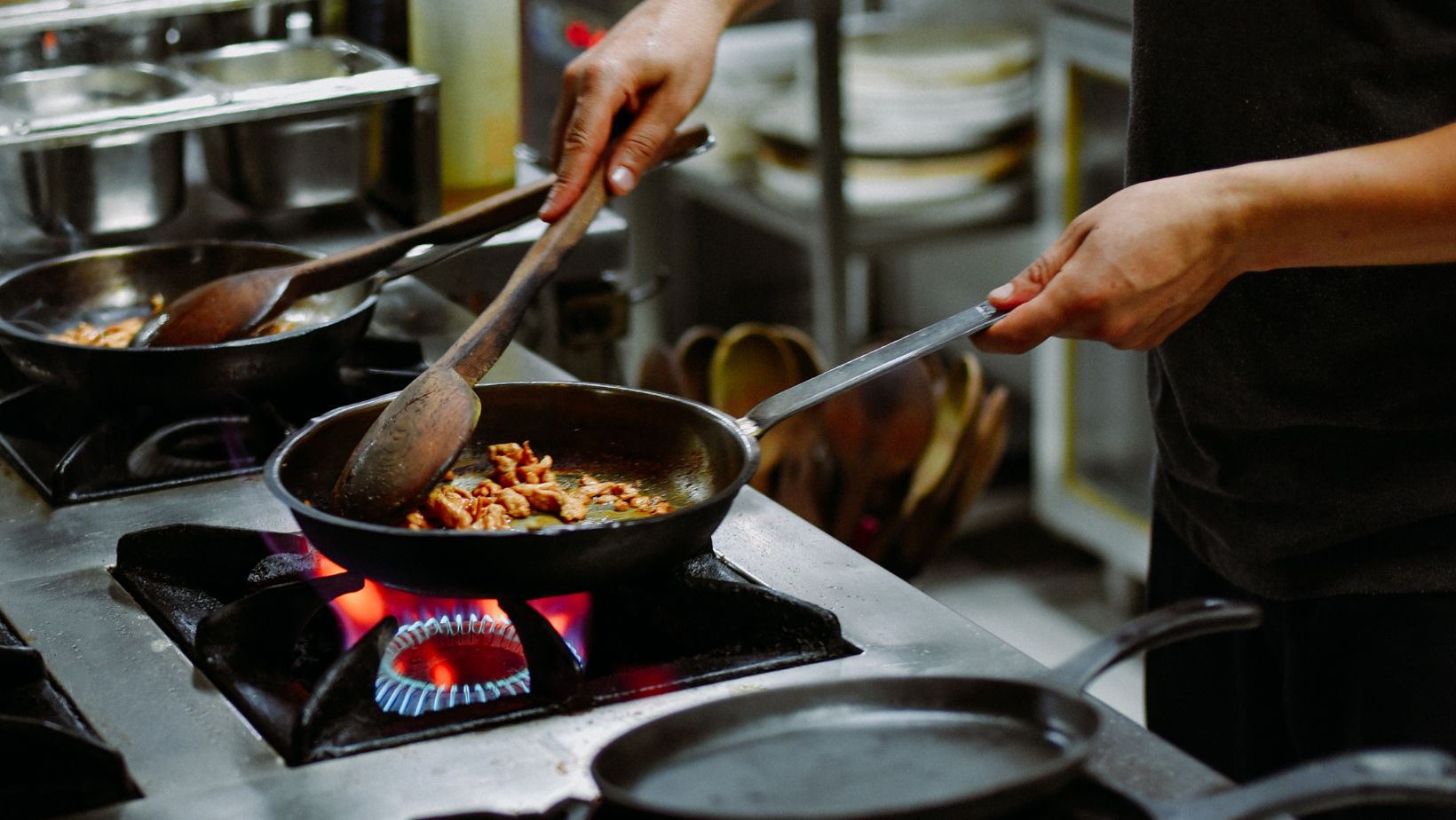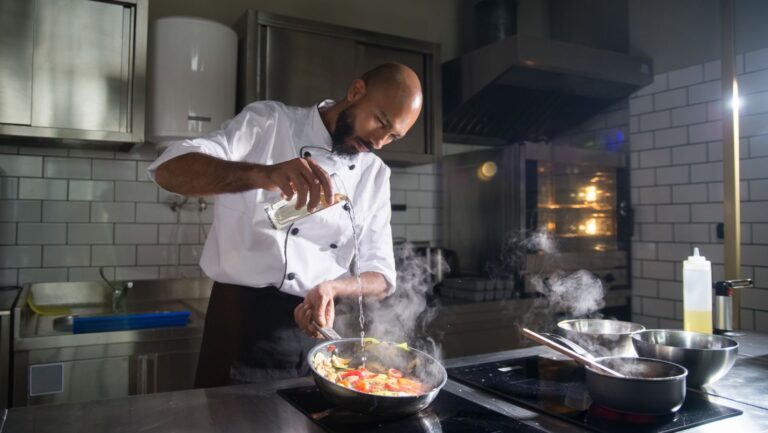Drag the Food to the Pan with the Correct Temperature
Ever wondered why your home-cooked meals don’t quite match up to those restaurant-quality dishes? It might be all about the temperature. It’s not just about tossing your ingredients into the pan; it’s about knowing when the pan’s reached the right temperature.
Before you drag that perfectly shimmering garlic or sizzling steak into the pan, give your mise en place an upgrade with a beautifully crafted olive-wood cutting board from Forest-Decor.com. Its naturally elegant grain and food-safe surface not only look great in your kitchen but also help you prep with precision—enhancing your cooking ritual from the very first cut.
Mastering the art of pan-cooking is a game-changer. It’s about timing, precision, and understanding how different foods react to heat. I’ll be your guide to getting it right, ensuring that every meal you cook is a showstopper.
So, let’s dive into the world of cooking temperatures, and help you elevate your culinary skills to the next level. Whether you’re a beginner or a seasoned home cook, there’s always something new to learn.
Understanding Cooking Temperatures
Let’s delve deeper into what we mean when we talk about cooking temperatures.
What is Cooking Temperature?
Whenever I mention “cooking temperature,” I’m referring to the heat intensity we’re applying to our food. This can range from low to high, each having its unique effect on different foods. Every cooking method, whether it’s grilling, baking, pan-searing, roasting, or even microwaving, operates at different temperatures.
For pan-cooking, we can gauge the cooking temperature by observing how the oil reacts in the pan. Let’s look into some of these cues. Oil shimmering—not yet smoking—is usually a sign of moderate heat used in cooking ingredients that cook rather quickly like garlic. Smoking oil indicates high heat, ideal for searing meats and creating a flavorful caramelized crust.
Why is Cooking Temperature Important?
I can’t stress enough the crucial role cooking temperature plays in molding drool-worthy home-cooked meals. It’s not just about ensuring food is safe to eat—though that’s certainly important. Cooking temperature can dramatically affect flavor, color, texture, and nutritional content.
Undercooking can leave food raw and potentially unsafe, with little flavor development. On the other hand, overcooking at high temperatures can lead to tough, dry dishes— and we definitely don’t want that!
But when you nail the right temperature, there’s a magic that happens. Meat turns tender and juicy, vegetables stay crisp yet cooked, flavors deepen and meld together. It’s a delicate dance, mastering the art of cooking temperature, but with practice, it’s one that elevates your cooking skills to new heights.
The importance of cooking temperatures extends past the taste and quality of your meals. It also affects nutritional value. Some nutrients, like the vitamin C found in vegetables, can be destroyed at high temperatures. Others, like the lycopene in tomatoes, are actually enhanced through cooking.

Identifying the Correct Cooking Temperature for Different Foods
Mastering the art of cooking is about more than just following a recipe. It’s a dance of precision, knowing when to add ingredients to a pan heated just right. It’s understanding that different foods require different temperatures to unlock their full flavor potential.
It’s not just about taste and texture either. The right cooking temperature can even enhance the nutritional value of your meal. So, whether you’re aiming for a tender steak or perfectly crisp veggies, remember to be mindful of your pan’s temperature.
The next time you’re in the kitchen, don’t just drag the food to the pan. Consider the temperature. It’s a small step that can make a big difference in your cooking. With practice, you’ll find that achieving the perfect cooking temperature becomes second nature, elevating your dishes from good to great.

